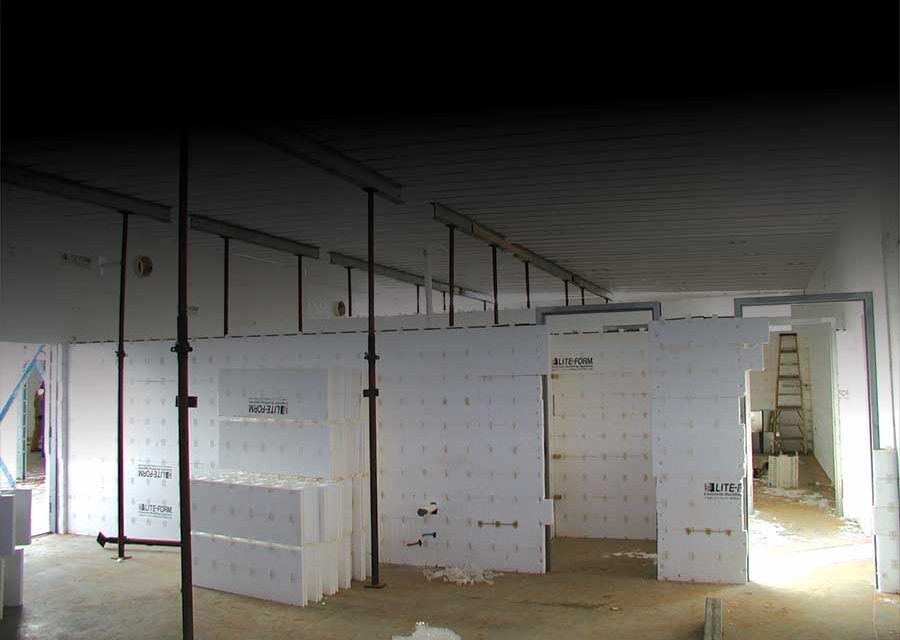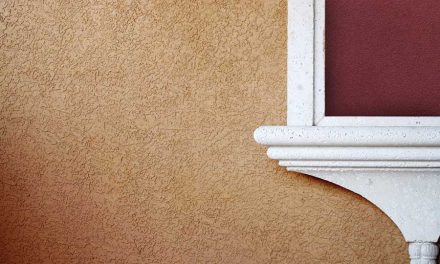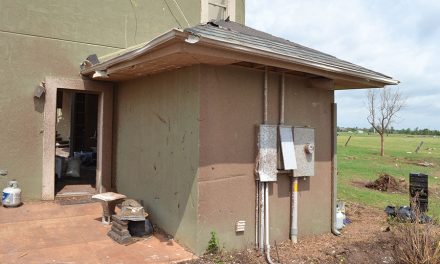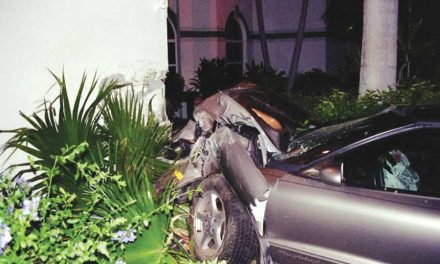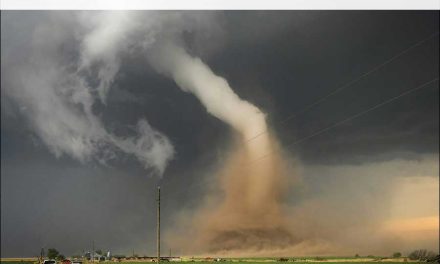This saferoom built for an Oklahoma high school, uses ICF for the walls and roof.
Safe rooms can be a highly profitable niche for ICF builders and distributors. They’re also a great way to introduce traditional homebuilders and their customers to ICFs.
“Any ICF distributor has the easy ability to put one of these together,” says Ed Autry, a waterproofing specialist at TAMKO. “I think a distributor could put one of these together for $1,500 to
$1,600 and sell it to the homeowner for $5,000 to $6,000. The homeowner will still get a good deal, since a good safe room easily adds 10K to the value of
the house.”
A safe room is a structure within a larger building designed to protect occupants from the ferocious winds and flying debris of tornados and hurricanes. They typically are made entirely of concrete—floor, walls, and ceilings—with a sturdy steel door that opens into the room—so debris can’t block it.
As violent tornadoes and hurricanes become more common, safe rooms are a valuable selling point, even in modest middle-class homes. ICFs are the perfect material for building safe rooms in new construction, or for retrofitting them in existing homes.
Alan Duyn, owner of Safe Home Enterprises in Venice, Florida, says a major portion of his business is building ICF additions—which function as safe rooms—onto stick-built homes.
“In Florida, the older homes are not built to withstand 130 mph winds,” he says. “We are part of the ‘My Safe Florida Home’ program to retrofit homes built prior to 2002 with hurricane protection measures.”
Duyn says many homeowners can’t afford to build new hurricane-resistant homes, but can build an addition that provides a safe location within their existing home.
“When they see the amount of steel being installed and the walls being poured solid with concrete, they don’t have to be convinced that it’s safer than conventional construction.,” Duyn says. “I’ve never had people so impressed. The customers are just ecstatic. It really speaks for itself. Usually, their only concern is what they’re going to do with the neighbors, since the neighbors who have seen it being built have started asking permission to join them in the safety of their addition during the next storm.”
Jim Smith, superintendent of the Elmore City-Pernell School District in Central Oklahoma, made sure ICFs were used to construct a tornado safe room for the local high school. FEMA provided financial assistance that covered a significant portion of the cost. More of a “safe building” than a single room, the stand-alone structure has space for 200 students, restroom facilities, and other amenities. Built from Logix ICFs, it supports a post-tensioned concrete roof, a full 8 inches thick, created with Lite-Deck.
Administrators were so impressed with the structure’s strength that when the elementary school needed more space, they insisted on building a “safe room wing” from ICFs. The 12-classroom, 15,000-sq. ft. elementary addition has steel safe room doors and a concrete roof similar to the high school.
“The great thing about the school is the energy savings,” Smith says. “There are tremendous benefits to using ICFs besides the safety factor.”
Autry, at TAMKO, says safe rooms are a good idea even in areas that aren’t prone to extreme weather. “Safe rooms can also be used as a panic room, or to provide storage and protection for weapons or important documents.”
He also says safe rooms are a great way to introduce traditional builders to ICFs. “If you can get stick-built contractors to build a safe room out of ICFs, it gives them a chance to get their hands on the materials and see how easy ICF construction really is. It gets the general used to dealing with ICFs, and they also see that they are actually very easy to deal with.”
The Federal Emergency Management Agency (FEMA) publication 320, titled Taking Shelter from the Storm: Building a Safe Room Inside Your House, has plans for a simple safe room. The booklet is available for free, and can be downloaded from their website. A link at www.icfmag.com will take you there.
For a customized safe room, The National Storm Shelter Association (NSSA) has developed an industry standard for shelters. The NSSA standard provides specific guidance on underground shelters not available in FEMA publications.
Basically, safe room components must be securely anchored and all connections between parts must be strong enough to stay intact during the strongest winds. Additionally, components must be impenetrable to airborne debris.
FEMA advises that below-ground safe rooms provide the greatest protection, but code restrictions, groundwater, or the threat of flooding during a weather event may make an above-grade room the best choice.
Financial assistance is available. Local, state and federal government agencies as well as other organizations offer grants, loans and tax incentives to owners and builders who build disaster-safe structures. FEMA explains their programs in detail at www.fema.gov. The website also provides links to other programs, such as the U.S. Small Business Administration’s Pre-Disaster Mitigation Loans for Small Businesses Program.

